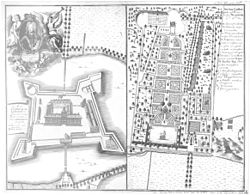
Christian IX was King of Denmark from 15 November 1863 until his death in 1906. From 1863 to 1864, he was concurrently Duke of Schleswig, Holstein and Lauenburg.
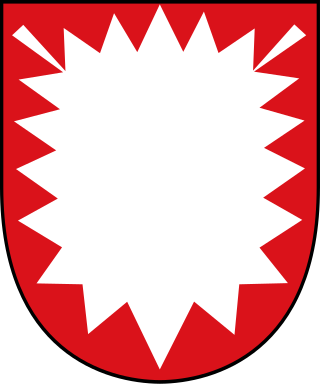
Holstein is the region between the rivers Elbe and Eider. It is the southern half of Schleswig-Holstein, the northernmost state of Germany.

The Duchy of Oldenburg named after its capital, the town of Oldenburg was a state in the north-west of present-day Germany. The counts of Oldenburg died out in 1667, after which it became a duchy until 1810, when it was annexed by the First French Empire. It was located near the mouth of the River Weser.
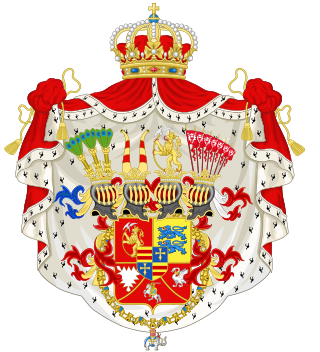
The House of Schleswig-Holstein-Sonderburg-Glücksburg, better known as the House of Glücksburg, is a collateral branch of the German House of Oldenburg. Its members have reigned at various times in Denmark, Norway, Sweden, Iceland, Greece, and several northern German states.

Holstein-Gottorp or Schleswig-Holstein-Gottorp is the historiographical name, as well as contemporary shorthand name, for the parts of the duchies of Schleswig and Holstein, also known as Ducal Holstein, that were ruled by the dukes of Schleswig-Holstein-Gottorp, a side branch of the elder Danish line of the German House of Oldenburg. Other parts of the duchies were ruled by the kings of Denmark.

The House of Oldenburg is a German dynasty. Branches of the house rule or have ruled in Denmark, Iceland, Greece, Norway, Russia, Sweden, the United Kingdom, Schleswig, Holstein, and Oldenburg. The current kings of Norway and the United Kingdom are patrilineal descendants of the Glücksburg branch of this house.

Charles Frederick, Duke of Schleswig-Holstein-Gottorp was a Prince of Sweden and Duke of Schleswig-Holstein-Gottorp and an important member of European royalty. His dynasty, the Dukes of Schleswig-Holstein-Gottorp, were a cadet branch of the ancient House of Oldenburg, which at that time was ruling Denmark-Norway. His mother was a sister of Charles XII of Sweden. Charles Frederick married a daughter of Peter the Great and became the father of the future Peter III of Russia. As such, he is the progenitor of the Russian imperial house of Holstein-Gottorp-Romanov and the patrilineal ancestor of all Russian emperors starting with Peter III, except for Catherine II.

Adolf of Denmark or Adolf of Holstein-Gottorp was the first Duke of Holstein-Gottorp from the line of Holstein-Gottorp of the House of Oldenburg.

The Duchy of Holstein was the northernmost state of the Holy Roman Empire, located in the present German state of Schleswig-Holstein. It originated when King Christian I of Denmark had his County of Holstein-Rendsburg elevated to a duchy by Emperor Frederick III in 1474. Members of the Danish House of Oldenburg ruled Holstein – jointly with the Duchy of Schleswig – for its entire existence.
Holstein-Glückstadt or Schleswig-Holstein-Glückstadt is the historiographical name, as well as contemporary shorthand name, for the parts of the duchies of Schleswig and Holstein that were ruled by the Kings of Denmark in their function as dukes of Schleswig and Holstein, thus also known as Royal Schleswig-Holstein. Other parts of the duchies were ruled by the Dukes of Schleswig-Holstein-Gottorp. The territories of Holstein-Glückstadt are located in present-day Denmark and Germany. The main centre of administration was Segeberg and from 1648 Glückstadt on the River Elbe.

Schleswig-Holstein-Sonderburg was the name of a branch line of the House of Oldenburg as well as the name of their land. It existed from 1564 until 1668 and was a titular duchy under the King of Denmark, rather than a true territorial dukedom in its own right. The seat of the duke was Sønderborg. Parts of the domain were located in Denmark, mainly on the islands of Als and Ærø and around Glücksburg, whilst other lands were part of the Holy Roman Empire, including the Ämter of Plön, Ahrensbök, and Reinfeld. As a result of various inheritance arrangements it fragmented into numerous small territories which were eventually absorbed into Greater Denmark in the 18th century.

Schloss Oldenburg is a schloss, or palace, in the city of Oldenburg in the present-day state of Lower Saxony, Germany. The first castle on the site was built around 1100 and became the ancestral home of the House of Oldenburg. The present building served as residence to the counts (1667–1785), dukes (1785–1815) and grand dukes (1815–1918) of Oldenburg.

Glücksburg Castle is one of the most significant Renaissance castles in Northern Europe.

Eutin Castle in Eutin in the north German district of Ostholstein is the cultural centre and nucleus of the town. Taken together, this castle, Gottorf Castle and Glücksburg Castle, form the most important group of courtly secular buildings in the state of Schleswig-Holstein.

Plön Castle in Plön is one of the largest castles in the north German state of Schleswig-Holstein and the only one located on a hill. The former Residenz of the Dukes of Schleswig-Holstein-Plön was built in the 17th century during the Thirty Years War and has had a colourful history in which it has, for example, been a school for military cadets and also a boarding school.

Frederick Ernest of Brandenburg-Kulmbach was a member of the Brandenburg-Kulmbach branch of the House of Hohenzollern. His most significant position was governor of the Duchies of Schleswig and Holstein-Glückstadt.
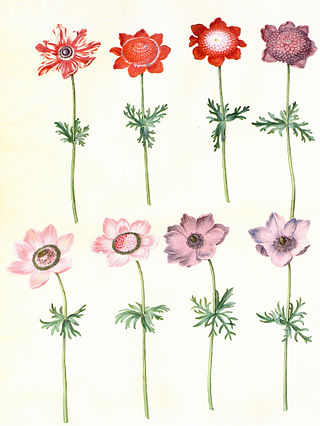
The Gottorfer Codex (German) or det gottorpske kodeks (Danish) is a four volume work commissioned by Frederick III, Duke of Holstein-Gottorp between 1649 and 1659 to depict the wide assortment of plants that grew in the ducal gardens at Gottorf Castle (Gottorp) in the duchy of Schleswig.
The Treaty of Tsarskoye Selo was a territorial and dynastic treaty between the Russian Empire and Denmark–Norway. Signed on 1 June 1773, it transferred control of ducal Schleswig-Holstein to the Danish crown in return for Russian control of the County of Oldenburg and adjacent lands within the Holy Roman Empire. The treaty reduced the fragmentation of Danish territory and led to an alliance between Denmark–Norway and Russia that lasted into the Napoleonic Wars. It also made possible the construction of the Eider Canal, parts of which were later incorporated into the Kiel Canal.
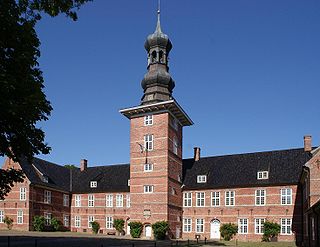
The Castle in front of Husum, originally named due to its location in front of the city boundaries when it was built, is situated in Husum, in the district of North Frisia in the state of Schleswig-Holstein. It was initially a secondary residence of the ducal house of Schleswig-Holstein-Gottorf and served as an occasional residence for the Danish royal family during the 18th and 19th centuries. It also accommodated administrative offices, which gradually expanded and eventually occupied most of the building after 1864. These offices remained there until the 20th century, and the castle came to be known as the "royal palace."

Reinbek Castle, located in Reinbek in southern Schleswig-Holstein, was built in the 16th century as a secondary residence for the ducal house of Schleswig-Holstein-Gottorf. It is one of the oldest buildings from the reign of Duke Adolf I and is regarded as the best example of the Renaissance style in Schleswig-Holstein. The castle was restored from 1977 to 1987 and now serves as an art and cultural center for the town of Reinbek.



